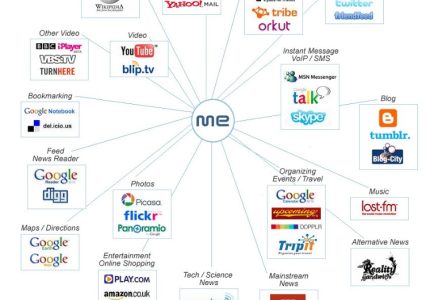Understanding the Importance of Small Business Website Design
Effective website design for small businesses is essential in establishing a strong online presence and attracting potential customers. A well-crafted website not only showcases products and services but also builds credibility and trust with visitors. Understanding the importance of thoughtful design can help small businesses stand out in a competitive digital landscape and achieve long-term growth.
Role in Building Credibility and Trust
Small business website design plays a crucial role in establishing credibility and trust with potential customers. A well-designed website reflects professionalism, attention to detail, and a commitment to quality, which reassures visitors about the legitimacy of the business. Clear navigation, appealing visuals, and accurate information help users feel confident in engaging with the business. Additionally, a modern, responsive design ensures accessibility across devices, enhancing user experience and demonstrating that the business is current and reliable. Ultimately, a thoughtfully crafted website serves as an essential tool in building lasting trust and attracting loyal customers to a small business.
Impact on Customer Engagement and Conversion
Understanding the importance of small business website design is essential for enhancing customer engagement and increasing conversions. A well-designed website serves as the online storefront that reflects the brand’s identity, builds trust, and provides a seamless experience for visitors. It influences how potential customers perceive the business and determines whether they choose to interact further or make a purchase.
Effective website design for small businesses can significantly impact customer engagement and conversions through various factors:
- Clear and intuitive navigation helps visitors find information quickly, reducing frustration and encouraging longer stays.
- Responsive design ensures the website works perfectly on all devices, making it accessible to a wider audience.
- Fast loading times improve user experience and decrease bounce rates, keeping visitors engaged.
- Visually appealing layouts with consistent branding foster trust and credibility.
- Incorporating calls-to-action guides visitors towards desired actions such as making a purchase, signing up for a newsletter, or contacting the business.
- High-quality content tailored to target audience needs enhance engagement and demonstrate expertise.
Overall, investing in thoughtful small business website design not only attracts visitors but also converts them into loyal customers, ultimately driving growth and success.
Influence on Search Engine Optimization (SEO)
Understanding the importance of small business website design is crucial for establishing a strong online presence and attracting potential customers. A well-designed website not only enhances brand credibility but also provides a positive user experience that encourages visitors to stay longer and engage more. Proper website design includes clear navigation, mobile responsiveness, and appealing visuals, all of which contribute to the overall perception of the business.
Moreover, website design plays a significant role in influencing search engine optimization (SEO). Search engines prioritize websites that are user-friendly, fast-loading, and structured properly, making it easier for search engines to index and rank pages. Elements such as clean code, relevant keywords, and optimized images improve visibility in search results. A thoughtfully designed website aligned with SEO best practices ensures that small businesses can reach their target audience effectively, increase organic traffic, and ultimately drive sales and growth.
Key Elements of Effective Small Business Website Design
An effective small business website design is essential for establishing a strong online presence and attracting potential customers. It combines attractive visuals with user-friendly functionality to convey professionalism and trust. By focusing on key elements such as clear navigation, mobile responsiveness, engaging content, and fast loading times, small businesses can create websites that not only look appealing but also drive conversions and foster brand loyalty.
Responsive and Mobile-Friendly Layouts
Effective small business website design revolves around creating an engaging, user-friendly experience that attracts and retains customers. A key aspect is ensuring that the website layout is responsive and mobile-friendly, allowing users to access and navigate seamlessly across all devices. This ensures a wider reach and improved user satisfaction.
- Clear Navigation: Simple menus and intuitive structure help visitors find what they need quickly.
- Responsive Design: Layout adapts to different screen sizes, providing an optimal viewing experience on desktops, tablets, and smartphones.
- Fast Loading Speed: Optimized images and streamlined code reduce load times, preventing visitor drop-off.
- Consistent Branding: Use of colors, logos, and fonts that align with brand identity builds trust and recognition.
- Visible Calls to Action: Clear and compelling prompts guide visitors toward desired actions like making a purchase or contacting the business.
- Accessible Content: Ensure content is easy to read with appropriate font sizes and contrast, accommodating all users including those with disabilities.
- High-Quality Visuals: Use professional images and videos to showcase products or services effectively.
- Prioritize User Experience: Design with the customer’s journey in mind to facilitate engagement and conversions.
- Regular Updates: Maintain current and relevant content to improve SEO and demonstrate business vitality.
- Contact Information Placement: Position contact details prominently to encourage inquiries and builds credibility.
- Analytics Integration: Use tools to monitor visitor behavior and optimize accordingly.
Clear and Consistent Branding
Clear and consistent branding is a fundamental component of effective small business website design. It helps establish a strong identity that resonates with visitors and fosters trust. Consistent use of colors, logos, typography, and messaging across all pages reinforces the brand’s personality and makes the website memorable. A well-branded site ensures that visitors immediately recognize the business and understand its values, which can lead to increased engagement and conversions.
Simple Navigation and User Experience
Effective small business website design centers around creating a simple navigation structure and a positive user experience that encourages visitors to explore and engage with the site. Clear and intuitive menus help users find what they need quickly without frustration. Using straightforward labels and organizing content logically make navigation seamless. A clean layout, with consistent fonts and colors, enhances readability and aesthetic appeal. Prioritizing fast loading times and mobile responsiveness ensures the site functions well on all devices, providing a smooth experience. Additionally, incorporating clear calls-to-action guides visitors toward desired actions, such as making a purchase or contact inquiry, strengthening overall engagement and conversion rates.
Fast Loading Speeds
Fast loading speeds are a crucial element of effective small business website design because they enhance user experience and reduce bounce rates. When a website loads quickly, visitors are more likely to stay and explore the content, leading to increased engagement and conversions. Slow websites can frustrate users and harm the business’s credibility, making it essential to optimize website performance.
To achieve fast loading speeds, small businesses should optimize images by compressing them without losing quality, leverage browser caching, and minimize the use of heavy scripts and unnecessary plugins. Implementing a content delivery network can also distribute content more efficiently across different locations, ensuring faster access for users worldwide. Regular website performance testing and updates help identify and resolve issues that might hinder loading times, maintaining an optimal user experience.
Overall, prioritizing fast loading speeds in small business website design not only improves usability but also positively impacts search engine rankings, driving more organic traffic and supporting business growth.
Compelling Calls-to-Action (CTAs)
Effective small business website design hinges on creating a visually appealing, user-friendly interface that clearly communicates the brand message. It should be easy to navigate, with a clean layout that guides visitors effortlessly toward key information or services. Incorporating consistent branding, high-quality images, and responsive design ensures that the website looks professional across all devices. Focused content that addresses the needs of the target audience and optimized loading times further enhance user experience and engagement.
Compelling calls-to-action are essential to convert visitors into customers. They should be clear, concise, and prominently displayed on the website. Using action-oriented language such as “Get Started,” “Request a Free Quote,” or “Subscribe Now” encourages users to take immediate steps. Placing CTAs strategically—such as at the end of sections, within sidebars, or as floating buttons—maximizes visibility without disrupting the user experience. Effective CTAs create a sense of urgency or provide value, motivating visitors to engage with the business and achieve desired goals.
Design Best Practices for Small Business Websites
Creating an effective website is essential for small businesses aiming to establish a strong online presence. By following best practices in design, small business websites can attract more visitors, build credibility, and convert visitors into customers. Focusing on user-friendly navigation, clean layouts, and mobile responsiveness ensures your website meets the needs of your audience and supports your business goals.
Utilizing Visual Hierarchy
Creating an effective small business website requires careful attention to visual hierarchy to guide visitors seamlessly through your content and encourage engagement. Visual hierarchy involves arranging elements on the page to indicate importance, helping users find information quickly and intuitively.
- Use Size and Scale: Make the most important headlines larger and more prominent to draw attention immediately.
- Prioritize Content Appearance: Position key information and call-to-action buttons above the fold where they are easily accessible.
- Apply Consistent Color Schemes: Use contrasting colors to highlight crucial elements like contact info, discounts, or sign-up prompts.
- Utilize White Space Effectively: Keep enough spacing around elements to prevent clutter and improve readability.
- Establish Clear Visual Pathways: Arrange elements in a natural flow, typically from the top left to bottom right, to guide users through your content logically.
- Use Typography Wisely: Select fonts and font sizes that differentiate headings from body text, emphasizing key sections without overwhelming the viewer.
- Incorporate Visual Cues: Employ arrows, icons, or images to direct attention toward desired actions or important information.
Choosing the Right Color Scheme
Choosing the right color scheme is a crucial aspect of designing a small business website, as it impacts brand identity, user experience, and overall appeal. A well-selected palette can evoke the desired emotions, enhance readability, and create a cohesive look that resonates with your target audience.

- Identify Your Brand Personality: Determine the core attributes of your brand and select colors that reflect those qualities, such as trustworthiness, creativity, or professionalism.
- Use Color Psychology: Understand how different colors influence perceptions and emotions. For example, blue often conveys trust, green suggests growth or health, and red can evoke excitement or urgency.
- Limit Your Palette: Stick to a harmonious color scheme with a few primary colors and complementary accents to maintain visual consistency and avoid overwhelming visitors.
- Ensure Readability and Accessibility: Choose contrasting colors for text and backgrounds to enhance readability and consider accessibility guidelines to accommodate all users, including those with visual impairments.
- Test Across Devices and Screens: Verify how your color scheme appears on various devices and lighting conditions to ensure it remains effective and consistent.
Using Quality Images and Graphics
Using high-quality images and graphics is essential for creating an engaging and professional small business website. These visuals help convey your brand identity, showcase your products or services, and build trust with visitors. Selecting clear, sharp images that are relevant to your content can significantly enhance user experience and make your site more attractive.
Ensure that images are optimized for the web to prevent slow page loading times, which can discourage visitors. Compress images without sacrificing visual quality, and use appropriate formats such as JPEG for photographs and PNG for graphics with transparency. Incorporate graphics that complement your text and support your messaging, rather than cluttering the layout.
Consistency in style and color scheme across all visuals helps create a cohesive look and feel, reinforcing your brand identity. Use custom graphics and icons where possible to add a unique touch, and consider professional photography for key visuals to ensure high quality. Regularly updating images with seasonal or promotional content can also keep your website fresh and engaging.
Incorporating Customer Testimonials and Reviews
Incorporating customer testimonials and reviews into a small business website is a powerful way to build trust, demonstrate credibility, and showcase positive client experiences. When designed thoughtfully, testimonials can significantly influence potential customers and enhance overall website effectiveness.
- Place testimonials prominently on the homepage or dedicated testimonials page to maximize visibility.
- Use real customer names and, if possible, include photos to add authenticity and personal connection.
- Keep testimonials concise yet detailed, highlighting specific benefits or successful outcomes.
- Incorporate a variety of reviews to represent different customer segments and services.
- Utilize visual elements such as star ratings, quote icons, or borders to make testimonials stand out visually.
- Update testimonials regularly to reflect recent customer experiences and maintain freshness on the site.
- Include calls-to-action next to testimonials encouraging visitors to contact or learn more about your services.
- Ensure the testimonial section is mobile-friendly for optimal viewing across devices.
Ensuring Accessibility for All Users
Designing a small business website with accessibility in mind helps ensure that all users, including those with disabilities, can access and benefit from the site. Prioritizing clear navigation, simple layout, and readable fonts enhances usability for everyone. Use high-contrast color schemes to improve visibility and ensure that text is distinguishable from background colors. Incorporate descriptive alt text for images so screen readers can convey visual content. Make sure interactive elements like buttons and links are easily identifiable and accessible via keyboard navigation. Organize content logically with headings and subheadings to facilitate easy scanning and comprehension. Avoid using color alone to convey information, and provide textual instructions or labels when necessary. Testing the website with accessibility tools and considering feedback from users with disabilities can help identify and address potential barriers. Implementing these best practices ensures that a small business website is inclusive, user-friendly, and compliant with accessibility standards, ultimately expanding reach and fostering trust with all customers.
Content Strategies for Small Business Websites
Effective content strategies are essential for small business websites to attract and engage visitors. A well-crafted content plan helps showcase products or services, build brand credibility, and improve search engine rankings. By focusing on clear messaging and valuable information, small businesses can create an online presence that encourages customer interaction and drives growth.
Creating Engaging and Relevant Content
Creating engaging and relevant content is essential for small business websites to attract and retain visitors. Well-crafted content helps communicate the brand’s message, showcases products or services, and provides value to potential customers. Focus on understanding your target audience to develop content that addresses their needs, interests, and pain points. Incorporate storytelling to make your message more compelling and memorable. Regularly update your website with fresh content such as blogs, news, or case studies to improve search engine visibility and demonstrate your expertise. Use clear and concise language, compelling headlines, and multimedia elements like images and videos to make the content more engaging. Lastly, include calls-to-action that guide visitors toward desired actions, such as making a purchase or contacting your business, to maximize your site’s effectiveness.
Maintaining Consistent Blog Updates
Maintaining consistent blog updates is a vital content strategy for small business websites, as it helps establish authority, engage visitors, and improve search engine rankings. Regularly publishing fresh content keeps your website active and encourages repeat visits from customers interested in your industry or products. To stay consistent, create an editorial calendar that outlines topics, deadlines, and publishing dates, ensuring a steady flow of relevant information. Focus on providing value through educational articles, industry news, or customer success stories that resonate with your target audience. Additionally, repurpose existing content to maximize effort and reach different reader preferences. Leveraging social media and email newsletters to promote your blog posts can also increase visibility and traffic, reinforcing your brand’s presence online. Ultimately, consistent blogging coupled with quality content enhances your small business website’s credibility and fosters long-term customer relationships.
Optimizing Content for SEO
Effective content strategies are essential for small business websites to attract and engage visitors while improving search engine rankings. Creating high-quality, relevant content tailored to the target audience helps establish authority and trust in the niche. Incorporating clear and compelling calls to action guides visitors towards desired outcomes, such as making a purchase or contacting the business. Consistency in publishing fresh content maintains relevance and encourages repeat visits.
Optimizing content for SEO involves several key practices. Conduct thorough keyword research to identify relevant terms that potential customers are searching for and naturally incorporate these keywords into titles, headers, and body text. Ensuring content is well-structured with descriptive headings and subheadings enhances readability and helps search engines understand the content hierarchy. Including internal links to other pages within the website improves navigation and distributes page authority. Additionally, optimizing meta titles and descriptions maximizes visibility in search results. Utilizing multimedia elements like images and videos, with appropriate alt text, can boost engagement and accessibility. Regularly updating existing content and removing outdated information keep the website current and valuable to visitors, ultimately driving more organic traffic and supporting business growth.
Including Contact Information and Contact Forms
Effective content strategies are essential for small business websites to attract and engage visitors. Clear and concise messaging helps communicate the value proposition and encourages potential customers to take action. Including well-organized contact information ensures visitors can easily reach out for inquiries, support, or further engagement. Contact details should be prominently displayed, typically in the header, footer, or dedicated contact page, and include phone numbers, email addresses, and physical addresses if relevant.
In addition to providing contact information, incorporating contact forms on the website enhances user interaction by allowing visitors to send messages quickly without leaving the site. Well-designed contact forms should be simple, asking only for necessary information such as name, email, and message, to encourage submissions. Placing contact forms on key pages, such as the homepage or a dedicated contact page, ensures accessibility and convenience. Combining clear contact details with intuitive contact forms creates multiple pathways for communication, helping to build trust and foster customer relationships for small businesses.
Technological Considerations and Tools
Technological considerations and tools are essential components in the development of an effective small business website. They determine how well the website functions, its user experience, and its ability to meet the business’s goals. Choosing the right platforms, programming languages, and software tools can streamline the design process, improve website performance, and ensure scalability for future growth.
Selecting an Appropriate Website Platform (e.g., WordPress, Wix, Shopify)
When choosing a website platform for a small business, it is essential to consider the specific needs of the business, technical skills, budget, and long-term goals. Platforms like WordPress offer extensive customization options and are ideal for businesses seeking a flexible, scalable website with a broad range of plugins and themes. Wix provides an easy-to-use drag-and-drop interface, making it suitable for small businesses that need a visually appealing website without extensive technical expertise. Shopify is optimized for e-commerce, making it perfect for small retailers focused on online sales with built-in tools for inventory management and payment processing. Evaluating each platform’s features, costs, and ease of use helps ensure the selected tool aligns with the business’s operational needs and growth plans. Additionally, technical considerations such as website hosting, security, SEO capabilities, and mobile responsiveness should be factored into the decision to provide a seamless user experience and reliable website performance.
Integrating Social Media and Sharing Features
Integrating social media and sharing features into small business website design enhances user engagement and broadens online reach. It requires careful consideration of technological tools that facilitate seamless sharing while maintaining website performance and security. Choosing the right platforms and tools ensures that visitors can easily connect and share content across various social media channels.
- Embedding social media buttons from popular platforms such as Facebook, Twitter, LinkedIn, and Instagram allows users to share content directly from the website.
- Utilizing social media APIs can enable dynamic content sharing and integration of social feeds, promoting real-time engagement.
- Implementing shareable links and customizable share dialogs enhances user experience by providing multiple sharing options.
- Incorporating third-party tools like addthis or sharethis simplifies the process of adding social sharing features with minimal development effort.
- Ensuring mobile responsiveness and fast load times is crucial, as many users access social media and websites via mobile devices.
- Monitoring sharing activity and social engagement through analytics tools helps evaluate the effectiveness of social media integration.
Implementing Analytics for Performance Tracking
Implementing analytics tools is essential for small business website design to effectively monitor and improve performance. Selecting the right tools involves considering factors such as ease of integration, cost, and the depth of data insights provided. Google Analytics is a popular choice due to its comprehensive features and free access, enabling businesses to track visitor behavior, page popularity, and conversion rates. Additionally, tools like Hotjar or Crazy Egg can offer visual insights through heatmaps and session recordings, helping identify user interactions and areas for improvement. Ensuring compatibility with other platforms, such as CRM systems or email marketing tools, enhances the overall analytical capabilities. Data collection should be compliant with privacy regulations like GDPR, making it important to implement necessary consent mechanisms. Regularly analyzing this data allows small businesses to make informed decisions to optimize website performance, enhance user experience, and increase conversions. Incorporating these technological tools thoughtfully lays a strong foundation for continuous website development and business growth.
Ensuring Website Security and Privacy
When designing a website for a small business, prioritizing security and privacy is essential to protect both the business and its customers. Implementing secure protocols such as HTTPS ensures data encrypted transmission, reducing the risk of interception. Regularly updating content management systems, plugins, and themes helps to patch vulnerabilities that could be exploited by cybercriminals. Utilizing strong, complex passwords and multi-factor authentication adds an extra layer of protection for administrative access. Employing web application firewalls and intrusion detection systems can monitor and prevent malicious activities. Additionally, ensuring compliance with privacy regulations like GDPR or CCPA involves clearly communicating privacy policies and obtaining user consents where necessary. Implementing tools for data encryption, secure backups, and session management further safeguards sensitive information. Overall, integrating these technological considerations and tools into website design establishes a secure environment that builds trust and maintains customer confidence.
Budgeting and Resources for Small Business Website Development
Effective budgeting and resource allocation are essential components of successful small business website development. Carefully planning financial investment and utilizing available resources can help ensure that the website not only meets business objectives but also provides a strong online presence without overspending. Understanding how to balance costs and capabilities enables small businesses to create a professional and functional website within their means.
DIY vs. Professional Design Services
When developing a small business website, budgeting and resource allocation are crucial factors that influence the overall quality and effectiveness of the site. Business owners often face the choice between DIY website creation and hiring professional design services, each with its advantages and challenges. DIY approaches, such as using website builders or content management systems, can significantly reduce costs and provide quick deployment for those with technical skills or a willingness to learn. This option is ideal for startups with limited budgets aiming to establish an online presence efficiently. However, DIY methods may result in less polished design and limited customization, potentially impacting brand professionalism.
On the other hand, investing in professional website development services offers tailored design, advanced functionalities, and optimized performance that align closely with business goals. Although this route typically involves higher upfront costs, it can lead to a more credible, user-friendly, and scalable website that supports growth and marketing efforts. Small businesses should assess their budget, technical expertise, and long-term objectives when choosing between these options. Ultimately, a strategic approach to budgeting—balancing cost with quality—ensures that the website effectively attracts and engages customers, contributing to the business’s success.
Cost-Effective Tools and Templates
Effective budgeting and resource management are essential for small business website development to ensure a professional online presence without overspending. Carefully allocating funds for design, hosting, and marketing can maximize results while maintaining financial stability. Utilizing cost-effective tools and templates can significantly reduce expenses, enabling small businesses to create a functional and attractive website within a limited budget.
There are numerous affordable website builders like Wix, Weebly, and Squarespace that offer user-friendly interfaces and customizable templates tailored for small businesses. These platforms often include hosting, domain registration, and design options at competitive prices, making them ideal for budget-conscious entrepreneurs. Additionally, open-source content management systems such as WordPress provide flexibility and a vast selection of free or low-cost themes and plugins to enhance website functionality.
Using pre-designed templates rather than hiring custom designers can save time and money while still delivering a professional appearance. Many website builders provide a wide array of free and paid templates suited for various industries, allowing small business owners to develop a visually appealing site with minimal technical expertise. Supplementing these tools with inexpensive graphic design resources, such as Canva, can also help create personalized branding elements without incurring high costs.
Overall, strategic use of budget-friendly tools and templates allows small businesses to establish an effective online platform, support growth, and maintain financial control, all while providing an engaging experience for visitors.
Ongoing Maintenance and Updates
Effective budgeting and resource allocation are essential for successful small business website development, ensuring that the project aligns with the company’s financial capacity while delivering a professional online presence. Small businesses should consider costs related to domain registration, hosting services, website design and development, and content creation. It is important to set aside a contingency fund for unforeseen expenses and future enhancements. Ongoing maintenance and updates are equally crucial to keep the website secure, functional, and relevant. Regularly updating content, plugins, and security measures helps in attracting visitors and maintaining search engine rankings. Budgeting for these recurring expenses upfront allows small businesses to plan accordingly and avoid unexpected financial strains, ensuring the website remains a valuable asset for growth and customer engagement.
Measuring Success and Continuous Improvement
Measuring success and fostering continuous improvement are essential components of effective small business website design. By regularly evaluating key performance indicators and user feedback, businesses can identify areas for enhancement, ensuring their website remains engaging, functional, and aligned with evolving goals. Emphasizing ongoing improvement helps small businesses stay competitive and provide a seamless experience for visitors.
Tracking User Engagement Metrics
Measuring success and fostering continuous improvement are essential components of effective small business website design. By regularly tracking user engagement metrics, businesses can gain valuable insights into how visitors interact with their site, identify areas for enhancement, and optimize the overall user experience. Important metrics include bounce rate, average session duration, pages per session, and conversion rates, which collectively provide a comprehensive picture of website performance. Analyzing these data points helps identify popular content, detect potential issues, and refine design elements to better meet customer needs. Continuous improvement involves iterative testing, gathering user feedback, and implementing updates based on data-driven decisions, ensuring the website remains relevant, user-friendly, and aligned with business goals.
Gathering and Analyzing Customer Feedback
Measuring success and continuous improvement are vital components of small business website design. By establishing clear goals, such as increasing visitor engagement or boosting conversions, businesses can track progress through key performance indicators like website traffic, bounce rates, and sales conversions. Regular assessment of these metrics helps identify areas for enhancement and ensures the website evolves with customer needs.
Gathering and analyzing customer feedback offers invaluable insights into user satisfaction and website effectiveness. This can be achieved through surveys, feedback forms, live chat interactions, and social media monitoring. Analyzing this data helps identify pain points, preferred features, and overall user experience, guiding informed decisions for ongoing website improvements. Ultimately, this iterative process fosters a more user-centric design that aligns with business objectives and enhances customer satisfaction.
Updating Website Content and Features Regularly
Measuring success and continuous improvement are essential components of effective small business website design. By analyzing website analytics such as traffic, bounce rates, conversion rates, and user engagement, businesses can gain valuable insights into what is working and what needs adjustment. Regularly reviewing these metrics helps identify areas for enhancement, ensuring the website remains aligned with business goals and customer needs.
Updating website content and features regularly is vital to maintain relevance and improve user experience. Fresh, high-quality content encourages visitors to return and engage more deeply, while new features can enhance functionality and customer satisfaction. Staying current with design trends, industry developments, and technological advancements ensures that the website remains modern, competitive, and capable of supporting the growth of the small business.





